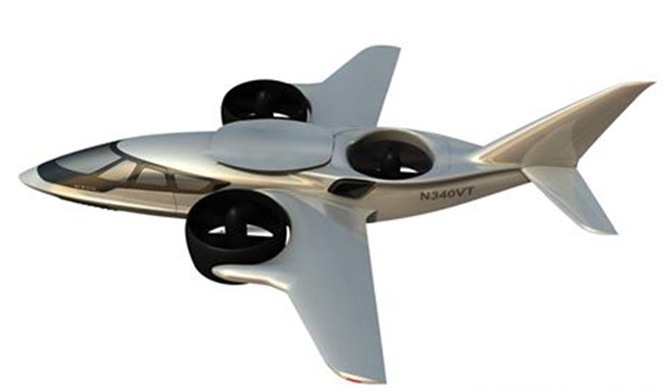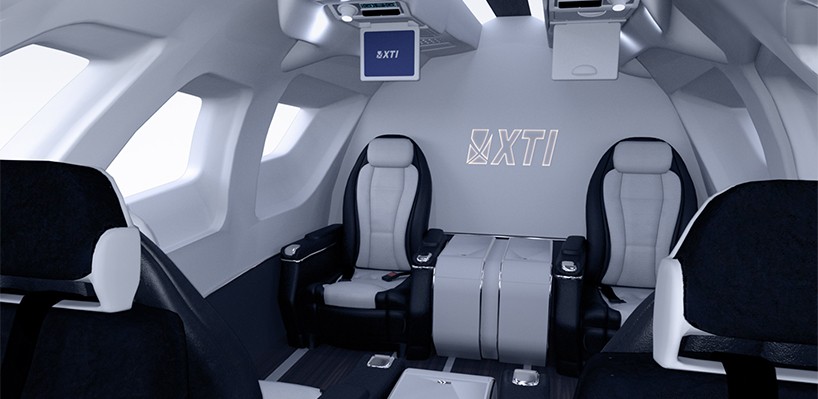Aerospace
6 seater Jet with Vertical take off..!!

SEPTEMBER, 1ST 2015 Various urban air transport aircraft have been proposed in recent years, and none of them works very well due to the complexities of working in an urban environment. The XTI Aircraft, an American company, based in Colorado wants to change it all. They have recently launched an ambitious Kickstarter campaign to fund the production of a new urban transport jet that can take off like a helicopter.
The total money required by the company is just 50 million dollars and the maximum amount of money raised by any project at Kickstarter is 20 million dollars. So it will have to be quite a campaign to raise that kind of funding. The plane can carry around six passengers and fly as fast as regular business jets nowadays. The obvious target market is the business community. It would be even harder to get the kind of funds they need because this community is always skeptical of these of these ideas and investing in them through crowdfunding.
XTI VTOL aircraft2

How Does it works ?
Using three ducted fans, the TriFan 600 lifts off vertically and in seconds the two wing fans rotate forward for a seamless transition to high-speed flight. Within just 90 seconds, the airplane reaches cruise speed – where the lift is provided by the wings just like every other fixed-wing airplane. The fuselage-mounted fan, no longer needed, closes up. The airplane flies directly to its destination and reverses the process. Landing vertically right where it needs to be – wherever there’s a clear helipad-sized paved surface.
The Facts
- MAX CRUISE SPEED ~340 kts (400mph)
- MAX CRUISE ALTITUDE – Over 30,000 feet above predominant weather
- RANGE- 800 – 1,200 miles*
- VERTICAL LIFT – 3 ducted fans
- ENGINE UP – 2,600 shaft horsepower range
- FLIGHT CONTROL- Fly-by-wire
- TIME TO MAX ALTITUDE – 11 minutes
- TIME TO MAX CRUISE SPEED – 90 seconds
We have seen this type of aerospace designs in many movies like the Avatar so, it doesn’t surprise many from the outside, but it should. It is very difficult to come up with an actual working model. The thrust is provided by three ducted fans, one in the tail, and other two on the wings. The wing fans can rotate 90 degrees to enable high-speed flight once the aircraft is good to go. It has been Named Tri-fan 600 for this arrangement.

Back view
According to XTI, the concept arose soon after the formation in 2009. David Brody, ex-Ceo of AVX Aircraft Co. was at the forefront of the whole process. Soon enough he was able to gather more influential people in the industry to work for his cause. The company has high hopes of achieving its target despite the odds against their project. They are of the opinion that aviation leaders will all come forward to make this aircraft a reality as they are branding it as a “kitty hawk” moment for the business transportation.
XTI VTOL aircraft
Tri-Fan if it becomes reality is going to be the first long-range, high-speed Vertical Take-off, and Landing commercial aircraft. It can fly as fast as business jets, but it can also land with ease on any helipad sized surfaces. It has a seamless transition from vertical to normal flight, and this might be the most significant achievement of the company. This tech has faced several problems over the years including the famous F-35 fighter project. The company also claims a maximum speed of 400 mph and a maximum range of 1000-1200 miles.
The aircraft would be further developed over the course of next two years with particular focus given to existing proven technologies. Several financing milestones lie in the process of its fulfillment and XTI is hopeful they will resolve them soon enough.
Liked It?
Share With your Friends and Family

Aerospace
Boeing Transfers Rocket Stage to NASA, Paving Way for Human Moon Mission

Boeing has achieved a significant milestone by providing NASA with the second core stage of the Space Launch System (SLS) rocket.
This crucial component, crafted at NASA’s Michoud Assembly Facility (MAF), is set to propel the Artemis II crew into lunar orbit, marking humanity’s return to deep space after a 50-year hiatus.
The monumental Boeing-built rocket stage, the largest element of the Artemis II mission, will embark on a journey aboard the Pegasus barge, traveling 900 miles to NASA’s Kennedy Space Center.
Comparison of two legendary aircraft B777x vs B747 aircraft:Click here
Upon arrival, it will be meticulously integrated with other essential Artemis II components, including the upper stage, solid rocket boosters, and NASA’s Orion spacecraft within the iconic Vehicle Assembly Building. This intricate integration process is a vital step toward the eagerly anticipated Artemis II launch, slated for 2025.
“Boeing-built products helped land humankind on the moon in 1969, and we’re proud to continue that legacy through the Artemis generation,” remarked Dave Dutcher, vice president and program manager for Boeing’s SLS program. “Together, with NASA and our industry partners and suppliers, we are building the world’s most capable rocket and paving the way to deep space through America’s rocket factory in New Orleans.”
NASA, Lockheed Martin Reveal X-59 Quiet Supersonic Aircraft:Click here
The delivery of Core Stage 2 marks a significant achievement in the evolution of the SLS rocket. Towering over 200 feet and powered by four RS-25 engines, this core stage, coupled with two solid-fueled booster rockets, will generate a staggering 8.8 million pounds of thrust. This immense power is crucial to launching Artemis II and future missions into the vast expanse of space.
The SLS rocket stands unparalleled in its capability to transport both crew and substantial cargo to the moon and beyond in a single launch. Its extraordinary capacity will facilitate the delivery of human-rated spacecraft, habitats, and scientific missions to destinations including the moon and Mars, ushering in a new era of space exploration.
-

 Travel1 week ago
Travel1 week agoAir India to Expand US Operations with Three New Routes After a Decade
-

 Travel2 weeks ago
Travel2 weeks agoWhy We Should Avoid These Stamps in a Passport
-

 Airlines1 month ago
Airlines1 month agoInvestigations Reveal Fake Chinese Titanium in Boeing and Airbus Jets
-

 Tech4 weeks ago
Tech4 weeks agoChina’s CATL Plans 1,800-Mile Electric Plane Launch by 2027
-

 Airport3 days ago
Airport3 days agoTop 10 Largest Airports in the World by Size
-

 Aerospace4 weeks ago
Aerospace4 weeks agoChina’s Fighter Jets Turn Wings into Autonomous Drones
-

 Airlines4 days ago
Airlines4 days agoAir India Rolls Out A350s for Delhi-New York JFK and Newark Routes
-

 Defence3 weeks ago
Defence3 weeks agoBoeing Enhances Chinook with New Engines and Block II Upgrades at $96 Million







